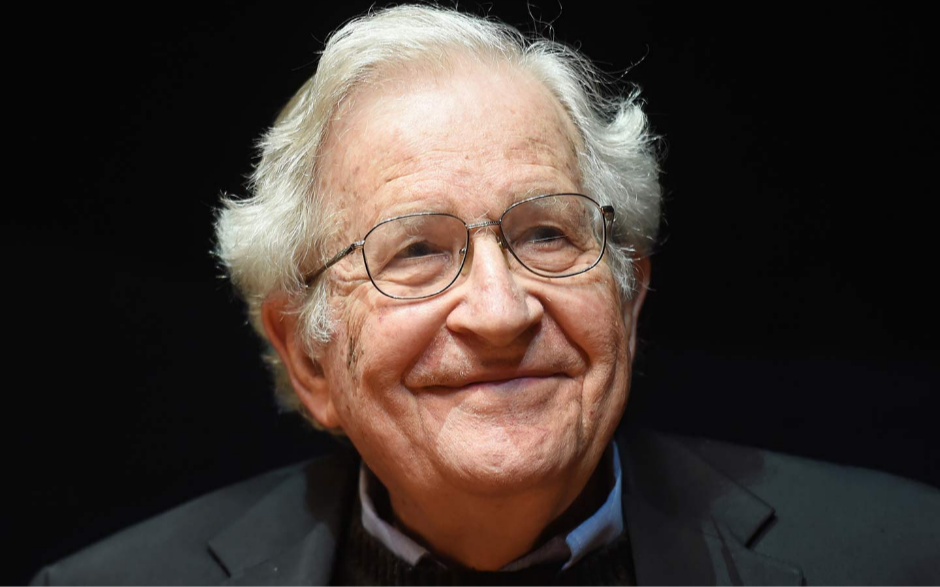One of the most influential and controversial theories in linguistics is the idea of Universal Grammar (UG), proposed by Noam Chomsky in the 1960s. UG is the hypothesis that a set of innate and universal principles govern the structure and acquisition of natural languages. Chomsky contends that all speakers of natural languages, regardless of their cultural or historical background, share these principles as a part of the human genetic endowment.
Principles and Parameters
Natural languages also exhibit much variation and diversity within and across languages. How can UG account for this variation? Chomsky answers that UG consists not only of principles but also of parameters. Parameters are binary choices that different languages can set differently, resulting in different surface forms. For example, one parameter is the head directionality parameter, which determines whether the head of a phrase precedes or follows its complement. In English, the head precedes the complement, as in eating an apple, while in Japanese, the head follows the complement, as in ringo o taberu (apple eat). Another parameter is the pro-drop parameter, which determines whether a language allows null subjects or not. In Spanish, null subjects are allowed, as in habla espanol (speaks Spanish), while in English, null subjects are not allowed, as in *speaks Spanish.
Chomsky argues that the child sets parameters during language acquisition based on the input they receive from their environment. The child does not need to learn the principles of UG since they are already part of their innate linguistic faculty. The child only needs to learn the parameters’ values relevant to their target language. This explains how children can acquire complex grammatical systems with relative ease and speed despite the limited and imperfect input they receive.
Competence and Performance
One of the critical features of universal grammar is the distinction between competence and performance. Competence refers to a speaker’s abstract knowledge of language, while performance refers to the actual use of language in specific situations. Competence is assumed to be uniform and invariant across speakers of the same language, while performance may differ based on various things, including memory, attention, motivation, etc. Universal grammar is concerned with describing the nature and limits of competence, not performance. For example, a speaker may know that a sentence like “Who did you see the movie with?” is grammatical in English but may fail to produce it correctly due to hesitation or distraction.
You can read about Behaviourist Theory in the following post:
UG Implications for First Language Acquisition
What are the implications of UG theory for first language acquisition? One implication is that language learning is a natural and effortless process that does not require explicit instruction or feedback. Children can acquire the grammar of their native language by being exposed to it without needing to memorise rules or correct their errors. For instance, children can learn the difference between singular and plural nouns, such as “cat” and “cats”, by noticing the morphological marker “-s” that indicates plurality. They do not need to be taught this rule explicitly, nor must they be corrected when they make mistakes, such as saying “one cat” or “two cats.”. They can infer and apply the rule from the input to new cases.
Another implication is that first language acquisition is a universal phenomenon that follows similar stages and patterns across different languages and cultures. Children can master the complex and abstract aspects of language, such as syntax and semantics, at a very early age, regardless of their cognitive or social development. For example, children can learn their language’s word order, such as subject-verb-object (SVO) or subject-object-verb (SOV), by observing how sentences are formed and how meaning is conveyed. They do not need advanced cognitive skills or rich social interactions to acquire this knowledge. They can learn it from any type of input, even if it is incomplete or noisy.
A third implication is that language acquisition is a creative and generative process that allows children to produce and understand novel sentences that they have never heard before based on their internalised knowledge of grammar. For instance, children can create sentences with complex structures, such as relative clauses or passive voice, by combining their already-learned simpler elements. They do not need to have heard these sentences before or have a specific communicative purpose for using them. They can generate them spontaneously and understand them intuitively.
UG Implications for L2 Learning
One of the main implications of UG for L2 learning is that it provides a framework for describing and explaining the similarities and differences between L1 and L2 grammar. UG assumes that L2 learners have access to the same universal principles and parameters as L1 learners. Still, they may have different settings for some parameters depending on the evidence they receive from the input. For example, one parameter that distinguishes English from Spanish is the position of the subject in relation to the verb. In English, the subject must precede the verb in declarative sentences (e.g., She sings), while in Spanish, the subject can follow the verb (e.g., Canta ella). UG predicts that L2 learners will be able to reset this parameter if they are exposed to sufficient and consistent input that shows them the correct word order in the target language. To illustrate this point, let us consider a study by White (1985), who investigated the acquisition of word order by native speakers of French learning English as a second language. White found that French learners initially transferred their L1 word order to English, producing sentences like *Is John happy?* instead of *John is happy? However, after receiving negative feedback and positive evidence from the input, they were able to reset their parameter and produce the correct English word order.
Another implication of UG for L2 learning is that it suggests that some aspects of language are more difficult or impossible to acquire than others. UG distinguishes between core grammar and peripheral grammar. Core grammar consists of the universal principles and parameters that are part of UG. In contrast, peripheral grammar consists of language-specific rules and exceptions that are not derived from UG. UG claims that core grammar is more accessible and acquirable than peripheral grammar because core grammar is based on innate knowledge, while peripheral grammar is based on memorization and generalization. Therefore, UG predicts that L2 learners will have more success acquiring core grammar than peripheral grammar and may fossilize or make errors in peripheral grammar even after years of exposure and practice. For example, one core aspect of grammar is the subjacency principle, which states that there are certain syntactic positions from which movement is not allowed. This principle accounts for why sentences like *Who did you see a picture of?* are grammatical, while sentences like *Who did a picture of surprise you?* are ungrammatical. UG assumes this principle is universal and innate and, therefore, easy to acquire by L2 learners. On the other hand, one peripheral aspect of grammar is the formation of questions in English, which involves moving the auxiliary verb to the front of the sentence (e.g., He can swim -> Can he swim?). This rule is specific to English, not derived from UG, and therefore difficult to acquire by L2 learners. Many L2 learners tend to omit or misplace the auxiliary verb in questions (e.g., *He swims?* or Swims he?*).
A third implication of UG for L2 learning is that it offers some insights into the role of instruction and feedback in L2 development. UG argues that input is essential for triggering and shaping the growth of linguistic knowledge, but it is not sufficient by itself. UG also recognizes that output is essential for testing and refining linguistic hypotheses but is optional for acquiring linguistic competence. UG suggests that instruction and feedback can facilitate L2 learning by providing explicit or implicit information about the target language, especially when the input is insufficient, ambiguous, or misleading. However, UG also acknowledges that instruction and feedback cannot override or replace the innate mechanisms of language acquisition and that they may have limited or variable effects depending on the learner’s age, aptitude, motivation, and stage of development. To support this claim, let us look at a study by Schwartz (1993), who compared the effects of instruction on two groups of native speakers of Spanish learning German as a second language. One group received explicit instruction on word order rules in German, while the other group received no instruction. Schwartz found that both groups could correctly acquire some aspects of word order, such as placing the verb at the end of subordinate clauses. However, only the instructed group could acquire other aspects of word order correctly, such as placing the verb in the second position of main clauses. This suggests that instruction can help L2 learners acquire some peripheral aspects of grammar but not core aspects of grammar.
Criticism against Universal Grammar
Many linguists and cognitive scientists have challenged UG on various grounds. Some of the main criticisms are:
- UG is not falsifiable and, therefore, not scientific. UG makes post-hoc observations about existing languages rather than predictions about what is possible or impossible in a language. This implies that UG is not subject to empirical testing or verification and is always adaptable to new data by changing or adding new rules or parameters. This makes UG a pseudoscientific theory that does not follow the standards of scientific inquiry.
- UG assumes a too-strict and unrealistic model of grammar that does not reflect how languages are actually spoken and evolved. UG ignores language use’s probabilistic, dynamic, and adaptive nature. UG views language as a static, formal system with set, universal rules. Nevertheless, context, communication, culture, and cognition are just a few of the factors that have an impact on language’s complex and flexible system. UG also neglects that languages constantly change over time and that they can diverge or converge depending on historical and social circumstances. UG does not account for the diversity and variability of language phenomena across and within languages.
- UG overestimates the poverty of the stimulus problem and underestimates children’s learning abilities. UG posits a language acquisition device (LAD) that is specific to language but does not explain how it works or why it is needed. Children can learn languages from the input using general cognitive mechanisms such as similarity-based generalization, error-driven learning, and Bayesian inference. UG assumes that children’s input is insufficient and ambiguous to learn languages. Still, this assumption is based on a too narrow and idealized view of grammar that does not match the actual input. Children can use various cues and strategies to infer the structure and meaning of language from the input, such as word order, prosody, pragmatics, and semantics. Children can also learn from negative evidence, such as feedback or correction, or implicit negative evidence, such as the absence or rarity of certain forms in the input. UG must also explain how children can learn more than one language or how adults can learn new languages.
- UG fails to account for the diversity and variability of human languages. UG assumes that some universal principles and parameters apply to all languages, but there is evidence that some languages need to fit into the UG framework or even contradict it. For example, the Pirah language (Brazil) is claimed to lack recursion, which is supposed to be a core feature of UG. Recursion is the ability to embed phrases or sentences within other phrases or sentences, creating potentially infinite structures. However, Pirah does not have any subordinate clauses or embedding structures, and its speakers do not use recursion in their non-linguistic cognition either. This challenges the idea that recursion is innate and universal to human language and thought.
These criticisms suggest that UG is not a valid or adequate theory of language and that alternative approaches are needed to explain how humans acquire and use languages. These approaches argue that UG theory needs to be less abstract, flexible, and connected to language’s actual use and function in real-life contexts. They propose that language learning is more influenced by frequency, meaning, communication, and interaction than by innate and universal principles and parameters. For example, usage-based approaches emphasize the role of input frequency in shaping linguistic patterns and preferences. They claim that children learn language by extracting statistical regularities from the input, such as how often certain words or constructions occur together. Functionalist approaches highlight the role of meaning and function in motivating linguistic choices and structures. They claim that children learn language by adapting it to their communicative needs and goals, such as expressing their intentions or emotions. Emergentist approaches stress the role of communication and interaction in facilitating language development. They claim that children learn language by engaging in social exchanges with others, such as asking questions or giving feedback. To conclude, UG theory is not without limitations or controversies, as it faces many challenges and criticisms from empirical evidence, alternative theories, and practical applications.
You can read more about Noam Chomsky and Universal Grammar at the following link:
https://www.britannica.com/biography/Noam-Chomsky/Linguistics





Leave a comment